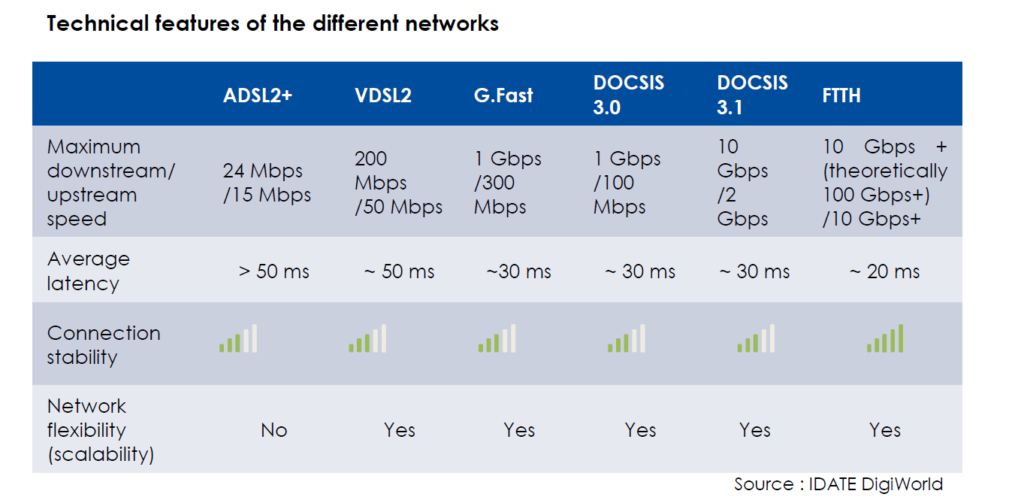Thanks to a combination of technological developments that are driving down costs and a surge in demand, FTTH rollouts are now in full swing. In addition to the challenges surrounding fibre network deployments, one of the big questions today is how telcos can take full advantage of their potential. In its report “FTTH: A Strategic Game-Changer for Telcos,” IDATE DigiWorld identifies the impact that these new networks are having on telcos’ business models. Not only does FTTH increase the risk of telcos being cut out of the loop on several fronts, it also creates new opportunities for them to diversify their operations and rethink their business model.
How is FTTH changing the telecommunications ecosystem?
After several years of debate, public and private sector players appear to have reached a consensus that FTTH is the preferred technology for providing ultrafast internet access. In Europe, the objectives laid out for the Gigabit Society explicitly list FTTH as the system of choice for covering as many households as possible by 2025. Telcos that have opted to use other technologies are tending to argue that they were interim measures, before making the leap to fibre. Deploying fibre infrastructure is shaking up the competition landscape, ushering newcomers into the market. Added to which FTTH is more expensive to deploy than other technologies – despite being cheaper to operate thanks to recent technological developments – which therefore requires a heavier initial outlay from telcos.
FTTH challenges telcos’ position on the content value chain
The development of OTT services that take advantage of fibre’s high speeds and low latency creates a real risk of telcos being cut out of the loop on many fronts. Thanks to their IPTV platforms, telcos have enjoyed a central role as content aggregators up until now – a role that is now being filled more and more by online platforms like Molotov TV, which are becoming increasingly popular as datarates are increasing, along with the overall quality of internet connections.

In addition, subscribers are increasingly eager to have high value-added content, notably sport, whose broadcasting rights cost telcos a pretty penny. Here too telcos are now having to compete with OTT players which are moving more and more into providing sport content.
How can telcos rise to these new challenges?
To meet these new challenges head on, telcos are working on diversification strategies that seek to capitalise on the growing popularity of OTT services, while protecting their positions on the video content value chain. FTTH also represents a sizeable opportunity for telcos to develop their wholesale market and B2B segment businesses by monetising some of fibre’s most powerful features, such as more stable connections, which are crucial for businesses, and increasingly fast upstream speeds, which are vital to certain more nascent solutions like cloud computing. Last but not least, FTTH enables telcos to expand into new markets such as real estate or smart city development, by creating synergies with new vertical industry partners. The aim is to use FTTH to put telcos at the core of a newly designed ecosystem.
IDATE DigiWorld delivers a detailed snapshot of this forward-looking paradigm in its report, “FTTH: A Strategic Game-Changer for Telcos,” which includes a host of examples of the new strategies available to telcos to protect their existing markets, and to conquer new ones.
To delve deeper into this theme
Buy our last report: "FTTH: A Strategic Game-Changer for Telcos"
More infoTags

